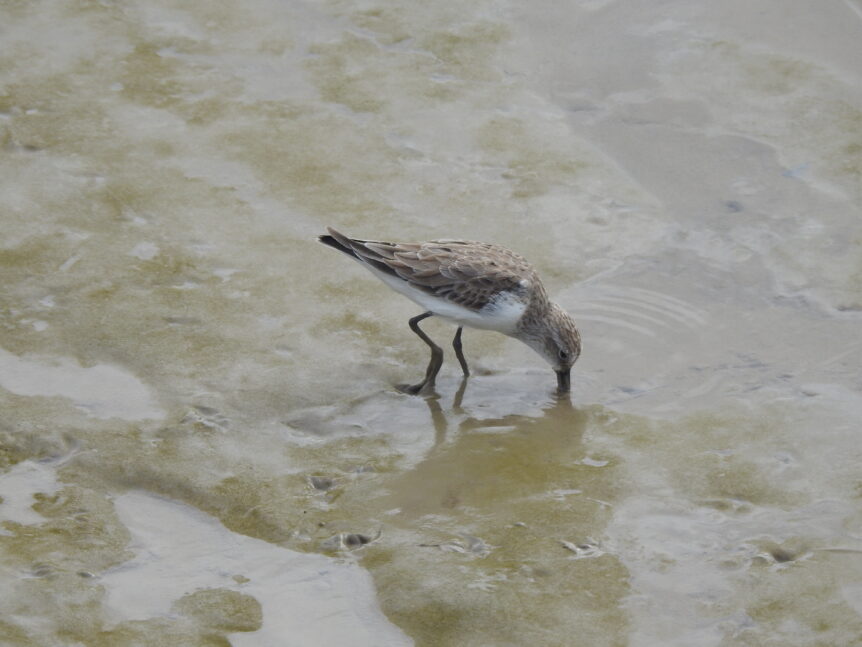The iconic maps depicting shorebird abundance in the Atlas of the Nearctic Shorebirds on the Coast of South America of Morrison & Ross (1989) cannot be clearer: the Surinamese coastline is of key importance to wintering populations of shorebirds. The vast tidal mudflats and extensive mangroves of Suriname are considered one of the most important wintering areas along the Atlantic Flyway in South America. High numbers of the globally Near Threatened Semipalmated Sandpiper winter here, but also Black-bellied Plover, Whimbrel, Greater and Lesser Yellowlegs, and Short-billed Dowitcher.
As a result, three sites were designated as Western Hemisphere Shorebird Reserve Network (WHSRN) sites of hemispheric importance in the late eighties, including Bigi Pan MUMA, Wia Wia, and Coppenamemonding. However, critical shorebird habitat is found basically along the whole coastline of Suriname.
A major threat identified along the Atlantic Flyway is habitat loss and change. Natural habitat change is what creates the coast of Suriname. Mudflats, built with sediment originated from the Amazon River, shift westward because of waves and sea currents, constantly changing the shape of the coast. Unfortunately, human interference to these natural processes decreases the quality of the habitat and food supplies for shorebirds.
Such an impact was observed at Weg naar Zee (“road to the Sea”), a site situated 10 km northwest of Paramaribo. Surveys in the seventies by Arie Spaans and early 2000s by Ottema and Ramcharan reported large numbers of shorebirds here, however, between 2011 and 2015 few to no shorebirds were seen and seemed to have abandoned the site (Ottema pers. comm). Coincidentally, removal of mangroves in the area had increased erosion and the mudflats appeared to have hardened due to a suspected change in the current of the Suriname River because of a new dam upriver (Ottema pers. comm). Lack of soft sling mud, a sort of gel made of water with a very high concentration of silt that is highly foraged on by shorebirds (Ottema & Spaans 2008), is believed to be the main reason.
To revert the erosion at Weg naar Zee, Professor S. Naipal, a renown hydrologist at the Anton de Kom University of Suriname, developed Sediment Trapping Units (STUs). By installing permeable walls of double rows of wooden poles in the mud and filling these up with brushwood, new sediments would be deposited after flowing through the walls and entering in calmer water. Habitat was restored with the replenished sediments and allowed new patches of mangroves to grow and thrive. Soft sling mud reappeared and so did the shorebirds.
To monitor the abundance of shorebirds, Manomet/WHSRN supported International Shorebird Surveys (ISS) at Weg naar Zee. During 2020-2022, O. Ottema and A. Tilburg carried out regular surveys, documenting the presence thousands of Semipalmated Sandpipers. The STUs developed by Professor Naipal not only rebuilt coastal resilience, but they also created shorebird habitat.



